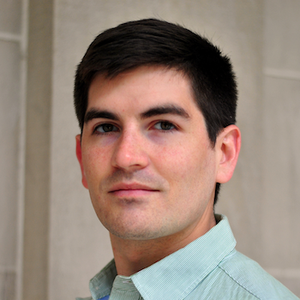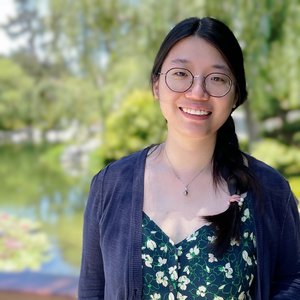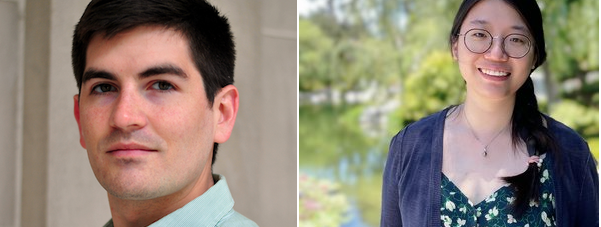Faculty Profile: Sergio de la Barrera

Assistant Professor, Experimental Quantum Condensed Matter Physics
Dr. Sergio de la Barrera joined the Department on April 1, 2023.
Welcome to U of T Physics Dr. Barrera!
What is your area of research or expertise?
My areas of expertise include 2D materials, low-temperature physics, and superconductivity. My experimental background includes nanofabrication, moiré materials assembly, quantum transport, electronic compressibility measurements, and planar tunneling spectroscopy. The latter two methods are uncommon and set me apart from other researchers in the field.
How did you get introduced to research on 2D materials?
I began my career in condensed matter physics in 2011, as graphene and other 2D materials were beginning to take center stage. While pursuing my Ph.D. with Prof. Randall Feenstra, an expert in tunneling spectroscopy at Carnegie Mellon University, I utilized the momentum-conserving property of vertical tunneling between 2D layers and the twist degree of freedom in van der Waals materials to explore physics that was not accessible in 3D. I developed a theory of planar tunneling between 2D materials including twist angle, wavefunction chirality, momentum relaxation, elastic- and inelastic-scattering-assisted tunneling, evanescent states in the tunneling barrier, quantum capacitance effects, and the electrostatics of dual-gated tunneling structures. While investigating these effects, I realized that twist provided access to momentum-space mapping of electronic structures in 2D, but the technology to continuously control twist angle did not yet exist.
What did you focus on in your postdoc research?
During my postdoctoral training, I broadened my focus into the areas of superconductivity, ferroelectricity, and other low-temperature phenomena. I also developed an expertise in electronic transport and compressibility measurements in 2D materials, including making significant contributions to low-temperature cryogenic amplifier and filter designs, improving nanofabrication techniques and adapting existing methods to extremely air-sensitive materials.
How was your experience and time working at MIT?
At MIT, I worked in one of the leading moiré physics research groups in the world, with Prof. Pablo Jarillo-Herrero, experience I will now bring to Canada, where moiré systems are not yet a major experimental focus.
More on Prof. Barrera's research here: https://barrera.physics.utoronto.ca/
Faculty Profile: Xiang Li

Assistant Professor, Physics and Chemistry of Quantum Materials
Dr. Xiang Li joined the Department on May 4, 2023.
Welcome to the U of T Physics Dr. Li!
You completed your PhD in Chemistry from The Pennsylvania State University. How does you research in Chemistry overlap with your current research in Physics?
My PhD projects in Chemistry focused on the design and synthesis of a new class of one-dimensional carbon nanomaterials, i.e., nanothreads, from small organic molecules. The tetrahedral, diamond-like bonding in nanaothreads, which is clearly distinct from carbon nanotubes, makes it hold promise for superlative mechanical properties and for completing the last remaining entry in the matrix of the hybridization and dimensionality of extended carbon structures. The formation of these ultrathin ‘diamond’ threads takes place in high pressure cells with anvils either built with single crystal diamond or diamond powder. The research experience of working with diamond anvil cell and in-situ high pressure scattering experiments gave me the opportunity to join a condensed matter physics group at Caltech as a postdoc. Since then, my research focus moved down from the first two rows in the periodic table to the sixth, where the 5D transition metals are.
What is your current area of research and why did you choose this topic?
My current research includes exploring new phases in quantum materials, especially those under extreme conditions, and to understand the underlying physical and chemical principles. The uncharted phase space provides fertile ground to search for and realize novel states, but meanwhile poses great challenges for measurements. For example, the Raman scattering technique has been established for decades and has become a popular noninvasive characterization approach. However, taking the measurement in demanding sample environments that are far from ambient conditions (temperature, pressure, fields, etc.) is much less straightforward and requires nontrivial development in techniques. In the meantime, to understand a novel phase, we need more ‘windows’ to investigate and therefore to avoid the situation of ‘the blind men and the elephant’. The efforts that we have been making with our collaborators mainly focus on using light as the probe to study strongly correlated systems under cryogenic, high-pressure conditions. The measurement results cut across different energy and time scales by adopting different optical techniques.
What research and or discoveries are interesting to you today?
My current research includes exploring new phases in quantum materials, especially those under extreme conditions, and understanding their underlying physical and chemical principles. This uncharted phase space provides fertile ground to search for and realize novel states, at the cost of great experimental challenges. For example, the Raman scattering technique has been established for decades and has become a popular noninvasive characterization approach. However, taking the measurement in demanding sample environments that are far from ambient conditions (temperature, pressure, fields, etc.) is much less straightforward and requires nontrivial development in techniques. Each technique provides a limited window into the behavior of the material. We need to develop a variety of techniques to avoid the problems illustrated in the parable ‘the blind men and the elephant’. The efforts that we have been making with our collaborators mainly focus on using light as the probe to study strongly correlated systems under cryogenic, high-pressure conditions. The measurement results cut across different energy and time scales by adopting different optical techniques.
What are you looking forward to at U of T?
I found that my academic training experience in both chemistry and physics is sort of serendipitous. This joint appointment in the Departments of Physics and Chemistry at U of T is definitely an incredible opportunity to pursue interdisciplinary research.

